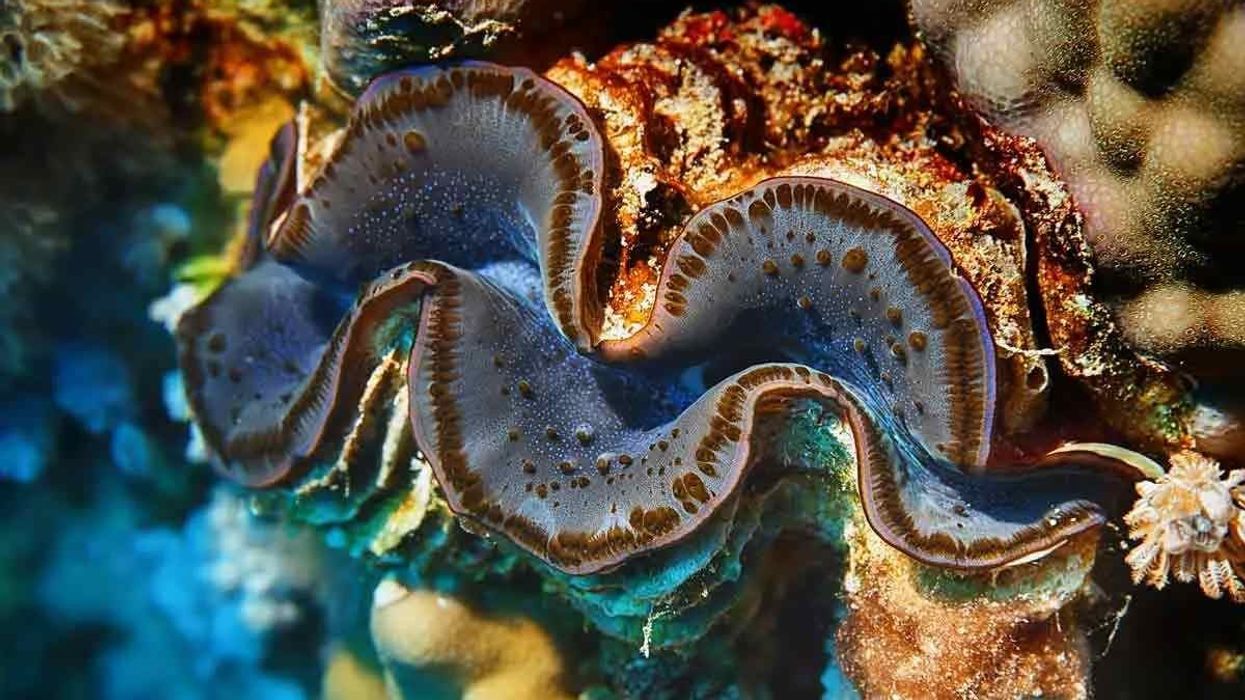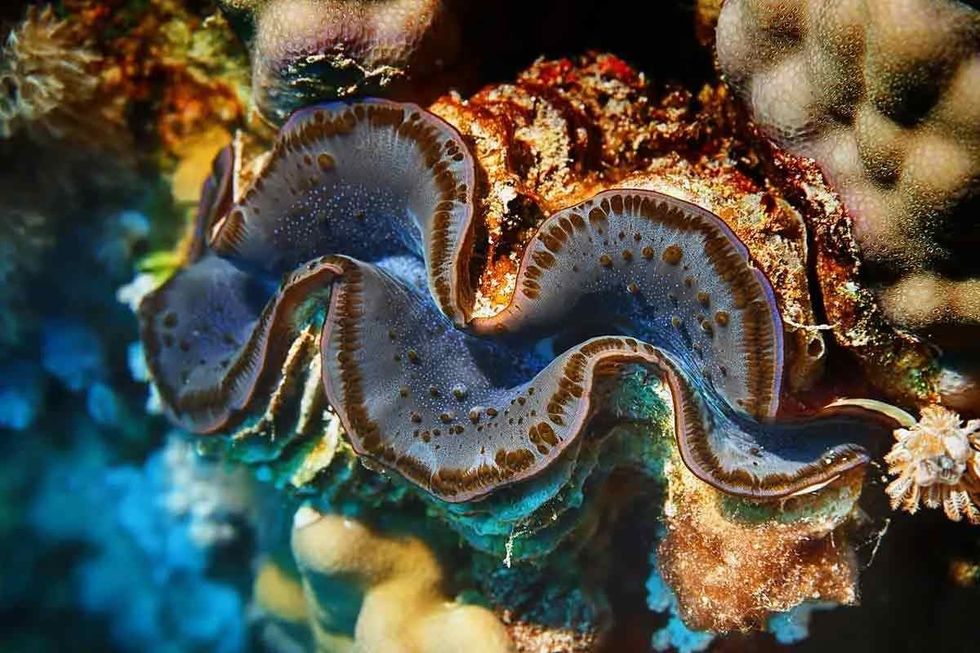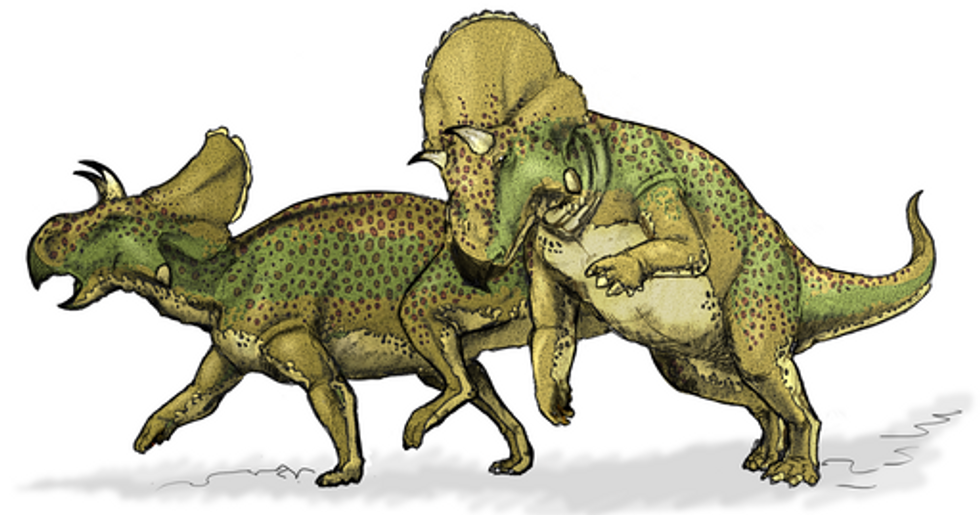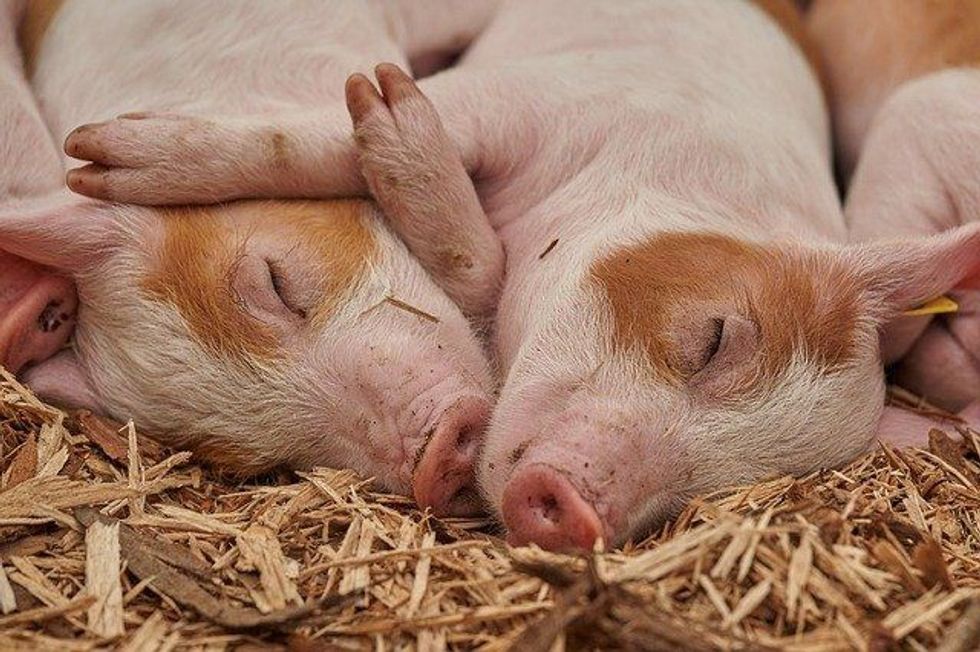The scientific name of this species is Tridacna gigas. They are of the Animalia kingdom and of the order Bivalve. Giant clams belong to the Tridacnidae family and there are a total of 100 species of giant clam. Even more impressive is the fact that the giant clam lifecycle lasts for about one hundred years!
Giant clams tend to have a pearl within them (the price of a giant clam pearl in a giant clam shell can reach up to $90 million!), however, finding a giant clam with a pearl is very rare.
The world's largest giant clam was approximately 4.49 ft (137 cm) long. It was first discovered in 1817 on the north-western coast of Indonesia. The weight of the two shells was found to be 510 lb (230 kg) in total. Nowadays, these shells are put on show in a museum.
Let's have a look at these interesting facts about giant clams, and if you like these, do read our ghost shrimp and slipper lobster facts too.
Giant Clam Interesting Facts
What type of animal is a giant clam?
The giant saltwater clam is befittingly named because it is the largest clam and, therefore, the largest bivalve (clam, oyster, or mussel) in the world.
What class of animal do giant clams belong to?
Giant clams (Genus: Tridacna) belong to the class Bivalvia and the phylum Mollusca. There are so many species of giant clam within the genus Tridacna, which are usually identified as Tridacna gigas.
How many giant clams are there in the world?
There are about 100 species of giant clam. Their exact population, however, is yet to be determined.
Where does a giant clam live?
They are usually found in flat reefs and shallow lagoons within the hot waters of the South Pacific and Indian oceans.
What is a giant clam's habitat?
From the class Bivalvia, the giant clam is an inactive animal that is found in its giant clam habitat of comparatively shallow waters. These waters are of a depth of no more than 65.6 ft (20 m).
Once a young clam larva finds a suitable location on the coral reef, it attaches itself to the coral reef and stays there for the remainder of its life. They like to inhabit reefs and lagoons with sufficient daylight penetration.
Who do giant clams live with?
Giant clams live in close collaboration with plant-like algae in their habitats.
How long does a giant clam live?
The giant clam lifespan is over 100 years, they certainly have a very long giant clam life cycle!
How do they reproduce?
Giant clams reproduce via external fertilization, where both the egg and sperm are discharged into the water. Since giant clams are cemented to the reef's surface, they can only reproduce with individuals that are nearby.
Therefore, these species are coincidental hermaphrodites. They produce both eggs and sperm but they're not capable of self-fertilizing. This feature of giant clam reproduction ensures that individuals nearby will always be able to reproduce with one another.
What is their conservation status?
The giant clam is considered to be Vulnerable, according to the IUCN Red List.
Giant Clam Fun Facts
What do giant clams look like?
The Tridacna gigas (giant clam) has four or five massive, inward, vertical folds in its thick, heavy giant clamshell. The shell doesn't have scutes and consists of just two valves.
Once they're grown up, they cannot use their adductor muscles to shut their shell completely. Their shell is yellow or golden brown, with several iridescent blue or purple spots. They even have various pale or clear spots on the shell, referred to as 'windows'.
These can be described as giant clam eyes as these 'windows' permit daylight to filter in through the shell that is critical for photosynthesis. No two giant clams have identical colorings.
How cute are they?
Giant clams are super-colorful! Their shell is sometimes a combination of yellow, red, green, blue, pink, and brown in color. These Tridacna gigas look breathtaking!
How do they communicate?
These clams communicate using muscular movements.
How big is a giant clam?
These bottom-dwelling behemoths are the biggest mollusks on earth, capable of reaching 4 ft (1.2 m) in size. A giant clam is equal in weight to half a horse.
How fast can a giant clam move?
Giant clams cannot move. This is why they use broadcast spawning, which involves emitting sperm and eggs into the water simultaneously. A transmitter substance helps synchronize the discharge of sperm cells and eggs to allow fertilization.
How much does a giant clam weigh?
A giant clam can weigh more than 500 lb (249 kg)!
What are their male and female names of the species?
There are no specific names given to male and female giant clams. All Pacific giant clam species are known by the scientific name Tridacna gigas.
What would you call a baby giant clam?
Baby giant clams are simply called young giant clams.
What do they eat?
Using its siphon, the giant clam filters its food. It east a giant clam diet including microscopic marine plants (phytoplankton) and zooplankton.
However, the bulk of its nutrients are obtained by a dependent relationship with billions of algae. They share a symbiotic relationship as the algae gain protection from predators from the clam, and the giant clam gets the carbon by-products of the chemical process.
Climate change, however, has affected the pH levels of these algae, this is detrimental to the existence of giant clams.
Are they aggressive?
The giant clam is neither aggressive nor dangerous. However, giant clam shells close when they feel defensive, and their shell valves shut slowly, posing the threat of entrapment.
Would they make a good pet?
Like many marine creatures, looking after giant clams is a big commitment. They prefer to live in open water bodies rather than an aquarium, so Tridacna gigas would not be a good pet.
Did you know...
The giant clam is a gigantic shellfish. The biggest recorded specimen was 6 ft (1.8 m) long!
Giant clams belong to the Tridacnidae family, and these giant clams inhabit coral reefs and lagoons that offer enough sunlight.
Giant clams have a thick, bony shell which is characterized by its zigzag pattern that is unique to every clam. In contrast to other clams, this clam cannot shut its shell fully.
The giant sea clam lives in interdependence with algae, and each organism benefits from advantages from this mutual living arrangement. Giant clams provide shelter and daylight, whereas algae give food to the clams. This is called a symbiotic relationship.
Although giant in size, these clams have a heap of predators. These include little ocean creatures, like fish, snails, and sea snakes. Eels, reef fish, and echinoderms also eat the giant clams' meat. These predators can take a bite, but they can't kill the enormous clams. Their bite only causes injury.
Humans also use giant clams for their meat (giant clam meat is quite famous). They are also often kept in public aquariums, where they are very popular.
Giant clams have two siphons (pipes) that eject bodily fluids and ingest food. They also have adductor muscles. Giant clam adductor muscles are used for closing their valves.
Giant clams play various ecological roles within coral reef ecosystems, they are suppliers of food and shelters, contributors to reef productivity, and builders and shapers of reefs. Besides algae, clams also offer protection for crabs.
Giant clams live an inactive life. Shortly after hatching, large young clams find themselves a spot and fasten themselves onto it.
One legend claims that these Pacific giant clams are man-eaters, but (luckily!) this has not be proven.
Rising temperatures due to global warming, along with an increased level of acid in coral reefs, both affect these clams adversely.
In Chinese mythology, they are called a 'chen' or a 'shen', meaning a 'sea monster'.
How do giant clams eat?
Giant clams are famous filter feeders that suck in massive quantities of water through their siphon. Water is circulated over its gills and a sticky mucous secretion causes microscopic organisms and organic matter from the water to stick to it.
Little hair-like structures referred to as cilia incessantly sweep these food particles towards the clam's mouth and into its digestive system. Waste is excreted through the anus, and filtered water is ejected through an exhalant siphon with a tubed spout.
How long after hatching do giant clam eggs start to move?
The giant clam releases a vast quantity of sperm and eggs into seawater. In the water different eggs and sperm combine with eggs and sperm of other giant clams. Fertilized eggs can freely move after 12 hours.
Here at Kidadl, we have carefully created lots of interesting family-friendly animal facts for everyone to discover! Learn more about some other arthropods, including the cockle or the Mydas fly.
You can even occupy yourself at home by drawing one on our Giant clam shell coloring pages.









